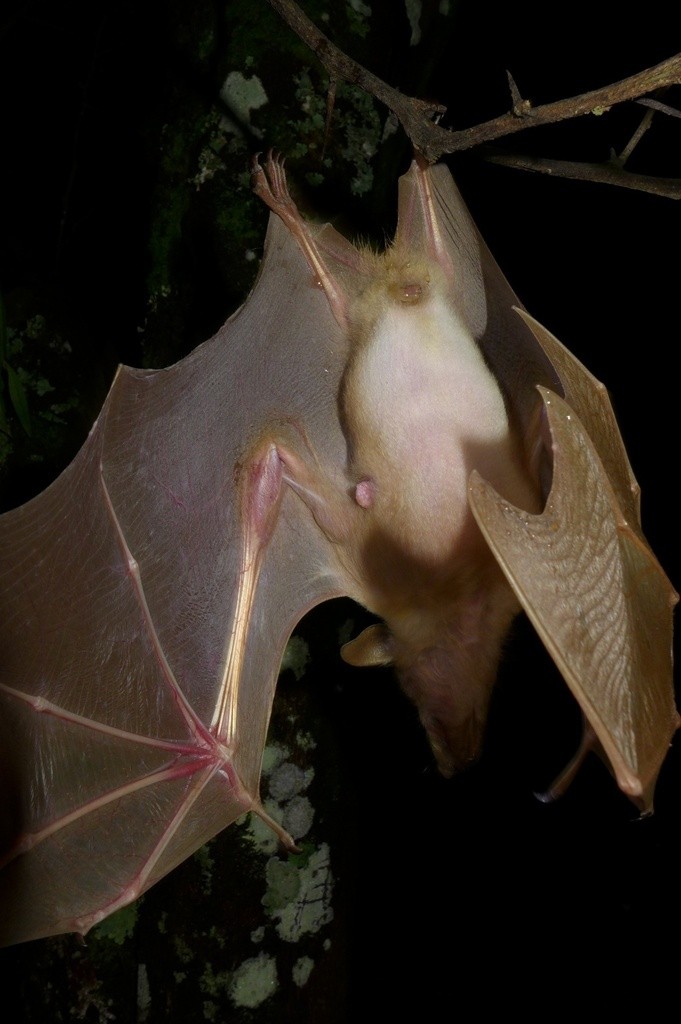Gambian epauletted fruit bat
A species of Epomophorus Scientific name : Epomophorus gambianus Genus : Epomophorus
Gambian epauletted fruit bat, A species of Epomophorus
Scientific name: Epomophorus gambianus
Genus: Epomophorus
Content
Description People often ask General Info
Description
The gambian epauletted fruit bat is a species of megabat that travels in large packs. They spend their nights eating (mostly mangoes) and resting in the trees. If one is shot down, the others swoop around showing grave concern as they appear to inspect the victim, which to some scientists implies affinity, even sympathy.
People often ask
General Info
Lifespan
21-28 years
Diet
The primary diet of gambian epauletted fruit bat predominantly consists of fruits, particularly wild fig and red ironwood. They prefer consuming pulp and juice, discarding the harder seed structures.
Appearance
Gambian epauletted fruit bat is a medium-sized bat species with fuzzy, brownish-grey fur. It has an elongated, pointed muzzle, prominent, rounded ears, and large, delicate wings used for active flight. Males have unique pouches on their necks that females lack. Its long tail is partially encased within a tail membrane, a defining trait amongst fruit bats. Its wingtips and tail membrane display a contrasting, darker shade of brown.
Behavior
The Gambian epauletted fruit bats are frugivorous and will appear wherever fig, mango, guava or banana trees are in fruit. The social behavior within fruit-bat camps does not stop at individual family groups. The whole colony is organized, with separate peripheral groups of immatures and non-breeding adults. The epauletted fruit bats travel in small groups of six to twenty bats. When the fruit bats are in flight, they remain together in long processions. The leaders often change, yet they retain the same direction of flight. (Mickleburgh) They frequently sniff at each other's scent glands to establish personal recognition. Which represents high levels of social organization. When one is shot down, they show great concern and gather round swooping low to inspect it; a sign of affinity rather than totally independent behaviour. They roost during the day in mango trees and bamboo reeds or other trees. The Gambian epauletted fruit bats hang upside down alone or in groups up to twenty. The species' droppings support whole ecosystems of unique organisms, including bacteria useful in detoxifying wastes, and producing gasohol. This species feeds on nectar and fruits of many West African trees, presumably acting as pollinator and/or seed disperser. Some flowering trees depend on the bats for pollination. (Fenton) The pack moves during sunset in large flocks from resting areas to feeding areas. To avoid predators, the bats will carry fruit away from the tree before eating. Over several nights bats may carry more than a ton of seeds from a single wild fig tree, dramatically increasing the number of seedlings that will survive in new locations. The fruit bats spend over half their lives roosting in various places. (Wilson) On the outskirts of the camp, non-territorial males act as guards. They are alert to the slightest disturbance. They perform a visual inspection and either give a loud alarm signal, or remain still, keeping an eye open. The Gambian epauletted fruit bats are unlike other bats because they use sight rather than echolocation to find food. They also rely heavily on their smell because they use it to locate food and establish bonds with one another. 
Scientific Classification
Phylum
Chordates Class
Mammals Order
Bats Family
Megabats Genus
Epomophorus Species
Gambian epauletted fruit bat 